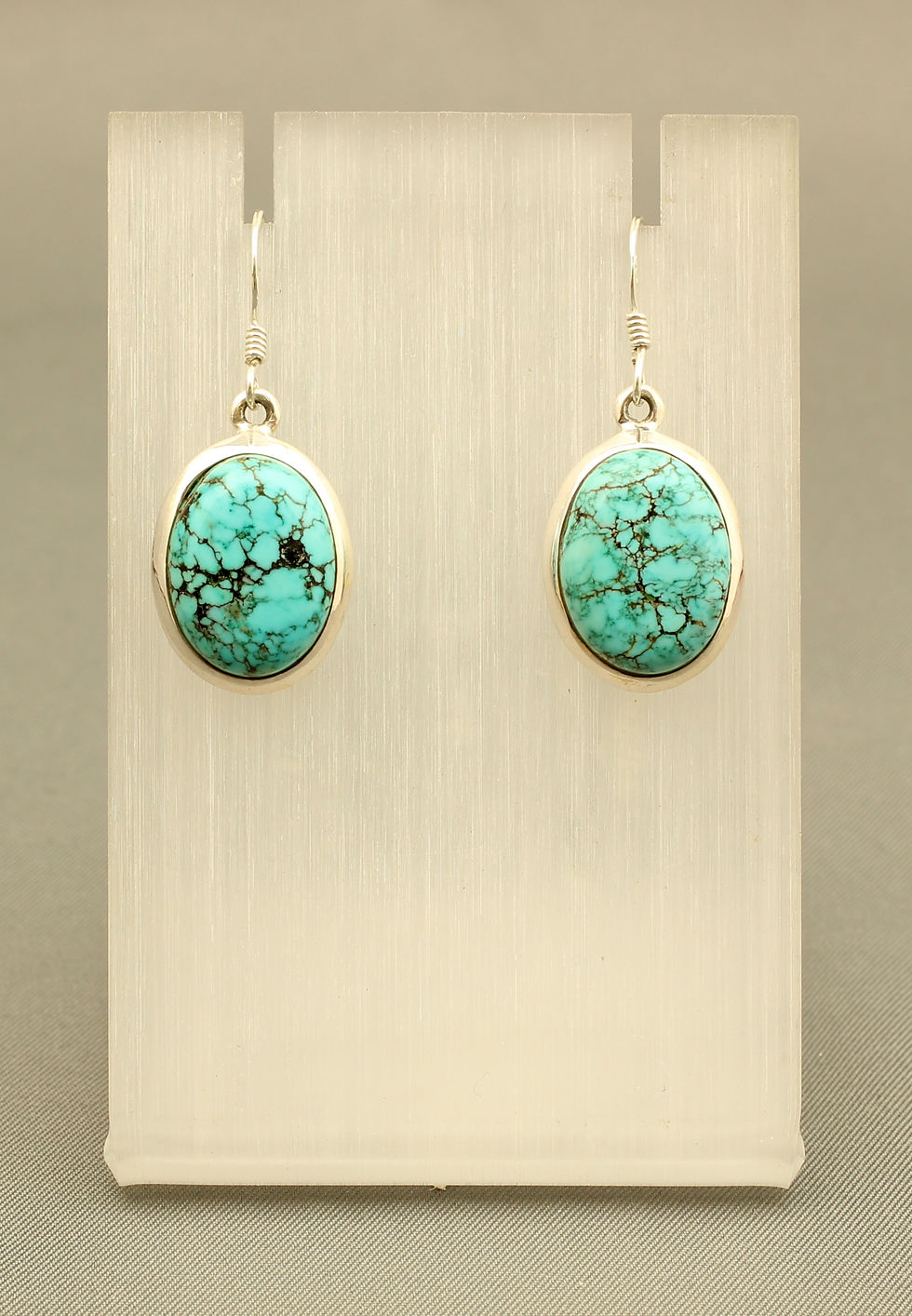Turquoise
- Stars Aberystwyth

- May 13, 2020
- 4 min read

Mythology and History
Turquoise may be the longest used of all gemstones. Beads dating back to 5000 BC have been found in Iraq, and is a national gemstone of Iran.
The name turquoise is derived from the French pierre turquoise, meaning 'Turkish stone'. This is because the trade routes through which turquoise reached Europe from the mines in central Asia went through Turkey, and Venetian merchants often bought the stone in Turkish bazaars. Turquoise has been found to have been in use thousands of years before, beads dating back to 5000 BC have been found in Iraq. It is a stone associated with the gods and goddesses in cultures as far apart as Ancient Egypt and China and the Americas.
One of the most prized stones in Ancient Egypt, its name means delight. Hathor, the goddess of love, marriage dance, music, joy and women was called the Lady of Turquoise, giving the stone a strong feminine association (in a number of of other cultures it was a male power stone). In Ancient Egypt turquoise was also linked to the sun gods and the sun at dawn and so, like lapis lazuli, it is a symbol of rebirth. The hair of the Sun God Ra was said to be made of turquoise. The Egyptians were mining turquoise in Sinai in 3200 BC.
Known as a male stone of power in the Americas, only warriors could wear it; in some parts it was only used as an adornment for the statues of male deities. It was regarded as a sky stone, a sacred manifestation of the source of creation. Turquoise is sacred to many American Indian tribes, including the Pueblo Indians. Indeed, in the Chaco Cannon groups of ruins in Mexico, nine thousand turquoise beads and pendants were discovered in the grave of a single warrior chief. Some were carved in the shape of animals or birds to attract favourable spirits to enter the crystals. Among the Apaches, turquoise was a powerful talisman and healer and was an important tool of the medicine man or woman. After a storm it was believed turquoise would be found in the damp earth at the point where the rainbow ended; these were especially prized and fixed to the end of a bow or a gun to ensure an accurate aim. The Navajo placed tiny pieces of turquoise on their magical sand paintings as a way of ending drought and, like the Pueblo Indians, they set pieces of turquoise under their dwellings to protect their homes and their families against evil spirits. As late as CE 1400 the Aztecs offered Queztalcoatl, plumed serpent god of the sun, a death skull inlaid with hundreds of tiny turquoise crystals.
Healing Properties
Turquoise strengthens the meridians of the body and the subtle energy fields. It enhances the physical and psychic immune systems and regenerates tissue, supports the assimilation of nutrients, alleviates pollution and viral infections. It heals the whole body, and is anti-inflammatory and detoxifying. Turquoise relieves migraines, sore throats, rheumatism, arthritis, bone disorders, lung and chest infections, and asthma and other allergies. It is excellent for inner ear and eye problems, including cataracts. It also eases cramps and over-acidity and gives resistance to fight viruses. Turquoise is an excellent stone for exhaustion, depression, or panic attacks.
Psychic/Emotional Associations
Turquoise promotes spiritual attunement and enhances communication with the physical and spiritual worlds. Absorbing all negative forces, turquoise endows wisdom on those who wear it and increases prophetic powers. It is said to give access to the collective wisdom of humankind. Placed on the third eye (the chakra between and slightly above the eyebrows) it enhances intuition and meditation. On the throat chakra, it releases old vows, inhibitions, and prohibitions, and allows the soul to express itself once more. It explores past lives and shows how the creation of your 'fate' is ongoing and depends what you do at each moment. This stone is empathetic and balancing. It promotes self-realization, and assists creative problem solving and calms the nerves when speaking in public. Turquoise is a strengthening stone. It dissolves a martyred attitude or self-sabotage. It instills inner calm while remaining alert, and has the dual function of both energising and balancing mood swings or extremes of emotions, making the wearer strong within but less sensitive to negative outer influences. This beautiful stone teaches you to talk from the heart. It loves the sharing of emotional wisdom, heartfelt communication; it loves togetherness, and family. It brings people together and gets them communicating. Turquoise also helps you strengthen your own voice, by purifying the throat chakra, and shows that personal expression has to be combined with personal responsibility.
Protective Functions
Turquoise is a purification stone. It dispels negative energy and clears electromagnetic smog, providing protection against pollutants in the environment. Famed as a protection against poison, turquoise is reputed to change colour if poison or other dangers are near. As a crystal for travel, turquoise protects you and your possessions against theft, loss or attack, helps prevent accidents, especially falls, and even guards your pets. Attached to a collar, bridle, or cage, turquoise prevents animals from straying or being stolen, and makes horses sure-footed and obedient to their riders.
Recharging turquoise energies
Turquoise fades in sunlight and from exposure to oils. We recommend recharging its energies by smudging it with an Amerindian sage smudge stick.









Comments